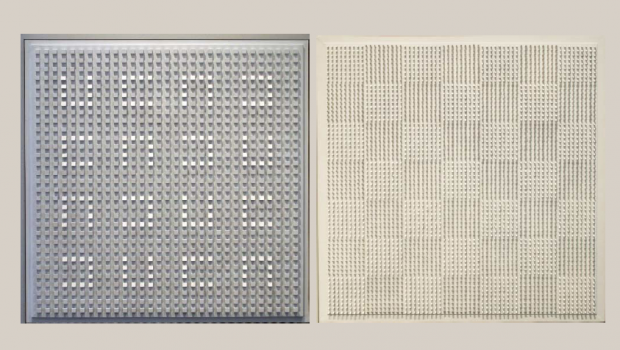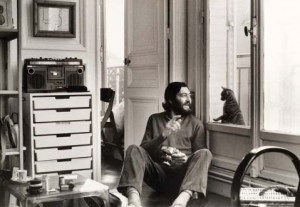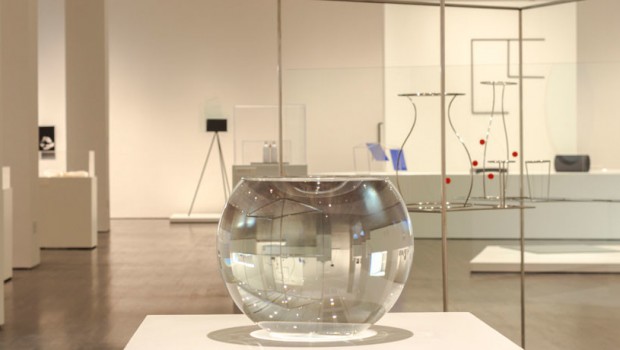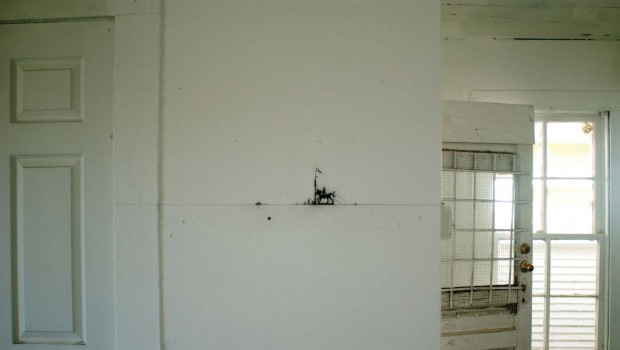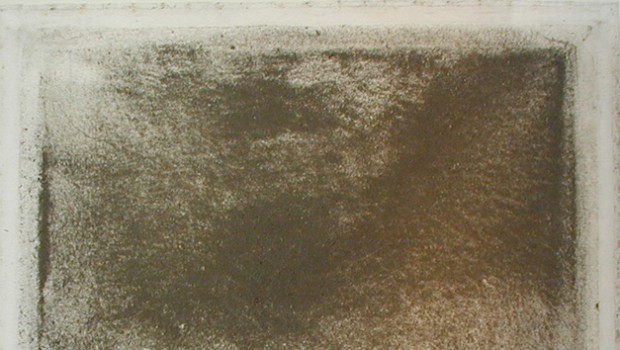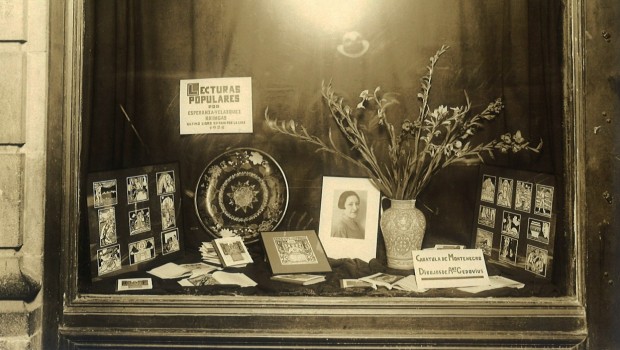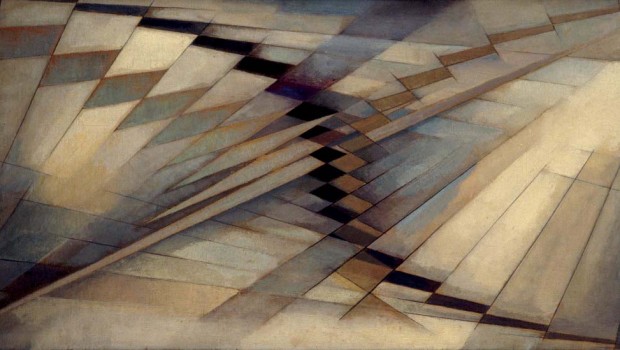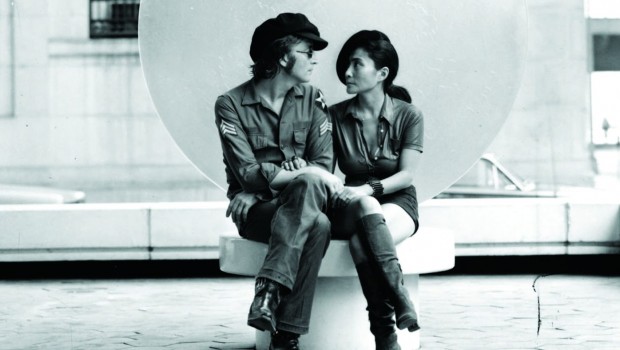I Don’t Do Anything. The Light Does It for Me: A Conversation with Francesca Bellini Joseph
Luis Tomasello
Download Complete PDF / Descargar
During the Modern Age, there were many artists who immigrated to Paris, seduced by its vibrant artistic scene. Latin Americans were no exception and in the Fifties, the now-recognized master, Luis Tomasello, took part in an adventure in the City of Light that resulted in a long artistic career. “All the great artists have passed through Paris,” said the nonagenarian, Tomasello, in a conversation which ran parallel to the mounting of his most recent exhibition in the Sicardi Gallery in Houston.
* * *
Francesca Bellini: You did only two-dimensional works in your early career. Tell us how the transition from painting to reliefs came about. What were the representational concerns that brought you to work in three dimensions?
Luis Tomasello: One mistakenly says that the appeal of working on canvas wears out easily, but it’s not the truth, because one continues painting and creating on the plane. But at the moment Vasarely, Demarco, García-Rossi and many other artists in Europe were following that line. I was feeling that my work was too much like theirs and I wanted to explore other things. I went to relief as an experience and in that process, I discovered the wonderful world of light. The reflection of color on the surface fascinated me and that is what I’ve worked in from that time on.
F. B.: Describe to us the instant when you discover “the representational language” that identifies all your work, including your recent efforts. How did this wonderful world of light reveal itself to you?
L. T.: Well, I say that I have two lives, one in Argentina and another in Paris from the age of 42. There was where I discovered light. I had already worked in the abstract but what interested me most was the Kinetic Art that I was seeing exhibited in the Denise Rene Gallery. I began to do Kinetic work on a plane but it soon lost its appeal for me because, as I said, right then there were many artists working in the same direction. I must have done seven or eight paintings before working in relief. There, I discovered the fascinating world of light because the little squares that I painted on the plane turned into cubes in relief, and so white got transformed into various tonalities when light encroached on one of their six sides.
But one day I put some little bars on a white sheet of paper and I saw how the color reflected on the surface. That was the instant that determined my first relief. It was almost an accident that I had been seeking because I always was curious about color. Later, I made a second relief, later a third and so, I yielded myself to all the things I do. So, it was born.
F. B.: An anecdote claims that the poet, Carlo Belloli, named your work, “Chromoplastic Atmosphere.” How did that happen?
L. T.: That’s correct. Carlo Belloli and I weren’t friends but Denise Rene asked him to write the catalog of the fi rst exhibition that I had in her gallery. I’m talking the Sixties. At that time, I called my work Reflection 1, 2, 3, etc. One day we conversed about the reflection of color and he told me that I had to change the title of my work because what I had done was to color the atmosphere. He proposed “Chromoplastic Atmosphere” and I, of course, accepted. The interesting thing is that the black reliefs that I began to do earlier, I also called “Chromoplastic Atmosphere,” and Belloli made a new suggestion that I change it to “Black Light” and so I did it. Carlo was a great writer who named my work.
F. B.: Master, let me quote you, “I don’t do anything—the light does it for me.”
L. T.: Exactly. If the light is more intense, the reflection is stronger, and it diminishes according to how weak the refl ection is. Hence, the same piece can seem to be many different ones. The light does all that, not me. In the case of Monet, for example, he did three paintings of the Cathedral of Rouen to show how architecture is transformed by the effect of the light, while my work is done only once because architecture itself comes to life due to light and shadow. It’s experiential.
F. B.: You have said it many times, you are strongly influenced by Mondrian. Can we talk about how you came into contact with his work and what elements have been fundamentals for you?
L. T.: I knew about him from books but I discovered him in the Denise Rene Gallery and later I traveled to Holland to see the whole process of abstraction that he had done with the tree. All of us Kinetic artists have seen Mondrian’s problem. At fi rst his work was static and the black bars maintained the color on the plane. Afterwards, he did them in color, later he fragmented them into cubes and finally, he created Boogie Woogie, that’s visually already a Kinetic work. “With the minimum, the maximum,” was the principle that Mondrian left me with and with that I’ve worked my whole life.
F. B.: Julio Cortázar also left you with many things in your life . . .
L. T.: It was a really lovely friendship that helped me to better myself as a human being. When I got to Europe, I was painting houses to survive. An architect contracted me to paint Cortázar’s house and so we met and we were inseparable friends. We did two books together following a process contrary to the traditional. While normally the artist illustrates what the writer writes, in this case, Cortázar produced taking off from the idea that I developed. Praise of Three was a rectangular book in which I painted a yellow line on the first page, a blue one on the second and a red one on the third. For me, they were the father, the mother and the child. On the following pages, I move them, I have fun with them and thus, they begin to live. Julio started his work taking off from that. We also did another book that was titled Ten Black. One day an editor called and asked me if I knew a writer to do a book/object. I said yes, I called Cortázar and he accepted immediately. The title came about because I proposed doing serigraphs of black works, the editor told us to only do ten and Cortázar wrote about the roulette wheel, which has two colors, black and red. By chance, the number ten on the roulette wheel is black and thus, the name.
F. B.: Maestro, let’s discuss myths. Was Vasarely really a leader in Kinetic Art?
L. T.: There was a series of people in Holland working in Kinetic Art before he was. Moreover, Soto was doing Kinetic Art before him. I wasn’t influenced by him at all, including the seriality in which a group of us artists were working, that was something that Vasarely included afterwards. What happens is that the eras get so close together that they end up getting confused with each other. Calder, for example, yes, he’s someone that we can consider as a father of Kinetic Art. What happens is that he wasn’t promulgating that at that moment, albeit the later time was responsible for showing us that quality in his work; the sensation of movement. Air is the purest form in Kinetic Art. That was the case with Calder. Mine, on the other hand, is a theme of light that comes in contact with color and reflects it. There is where there is a shift and, thus, movement, although nearly imperceptible. Light is that way.
F. B.: Kinetic Art is agressive to the eye, it moves, it misleads you. However, your work is more tranquil, it doesn’t disturb, it’s subtle. Would we be able to talk about the paradoxes of Kinetic Art?
L. T.: Yes. For me, the dizzying aspect of Soto’s work is almost poetic. He is one of my favorites. Compared, the contrast in Vasarely is so strong that it gets nauseating. My work isn’t violent to the eye, it’s tenuous and the movement is so calmed that it’s almost imperceptible and it generates itself by the repetition of the elements. The color is tranquil, as if it were a sunbeam and thus, the movement gets perceived over time. Calder’s work isn’t violent either. That originates from the spirit of the artist and his sensitivity.
F. B.: Let’s talk about the architectonic integrations that you’ve brought about. I understand that your interest in architecture much predates your artistic life.
L. T.: My father was a mason, my brother a builder and the other brother a civil engineer. I worked with them for 20 years and I was enchanted by creating construction projects. People tell me that my work has a lot of architecture in it. However, I don’t think about that at the moment of creating, even though it’s seen in the result. Yes, it interests me more to work in architecture than to make reliefs because there’s a space to fill. There are walls, roof and floor to be thought out. The reliefs attempt to explore a third dimension but they never arrive at the point of conversion into an architectonic integration experience. To do the Blue Hall in the Congressional Palace in Paris, I worked with an acoustical engineer who helped me choose the appropriate materials that would let the sound circulate clearly. In this case, they’re made with plaster and gauze. The lobby was the first that I did completely white and the chairs were blue, thus, the name. Another thing was the architectonic integration in the Pharmacy Faculty building in Marseille. I did a metal weaving with polyester to fi lter the light and the result was a wonderful play of light and shadow projected on the floor and walls.
F. B.: Another myth. The history of art tells that the artists who immigrated to Paris in the Fifties were of a socialist bent and that informed the intellectual and artistic production of the moment, including Kinetic Art. What do you have to say about that?
L. T.: Who among those artists were socialists? (laughter) Some of us were left wing, others right wing, and others, whatever was convenient. I always have been a socialist, although really, the one and the other aren’t that different. In any case, yes, I feel that socialism is a little more humane. However, I never have done my work according to my political stance. Well, yes, I have been surrounded by more or less important socialist figures, but there has been no political intervention in my work. I never have mixed one thing with the other. During the Mussolini and Hitler era, yes, there were artists whose work was expressing what was happening. Today, I also see a group of artists who are making works related to politics and what happens in the world; that for me isn’t all bad but it isn’t something that personally interests me. I prefer that it originate from what I feel and from my sensitivity.
F. B.: May ’68 was a demonstration of students and leftist intellectuals. How did you experience that moment?
L. T.: Yes, I was there but fortunately, I didn’t demonstrate because they had nearly thrown me out of France, as happened with almost 300 students who never would be able to return. The Minister of Defense told students that they’d better study and not organize demonstrations. Other artists like Le Parc and Demarco demonstrated, too. I was close to Madame Pompidou and thanks to her intervention, they were able to return. It was a very difficult moment.
F. B.: How was your relationship with Madame Pompidou? What advantages did that friendship bring?
L. T.: I’m going to tell you an anecdote. When she went to my show in Paris, she saw the works and told me, “these pieces are museum quality.” I answered her, “and why not for the Pompidou?” She said, “and why not!” (laughter) She spoke to the director and they acquired two pieces that today are exhibited in their permanent collection. Later they bought another from me and I donated two more, so there are five Tomasellos in the Pompidou Center. She was a wonderful woman and we had a nice friendship. She wasn’t very interested in politics and all those duties bored her. Madame Pompidou was a free spirit, a philanthropist and a patron of the arts.
F. B.: Last question, master, must artists be the voices of their eras?
L. T.: The creative spirit of man can’t be stifled. Throughout history, it has gone on, from the Renaissance to Op Art. There is a conductive thread that unites us and nobody is tapped with a magic wand. Never do you do what the great ones did before you. Painting gained a lot with Impressionism, later Abstract art arrived and from there, Kinetic. I don’t consider that it’s a great thing in the history of art but it is something and I believe that there’s nothing new since. In the final analysis, don’t the artists that employ electric light and video take a little from the Kinetic? I don’t really believe that Op Art has sparked their interests but it must have an influence. I hope it was so. It’s a question of time.
Posted: April 18, 2012 at 9:55 pm


